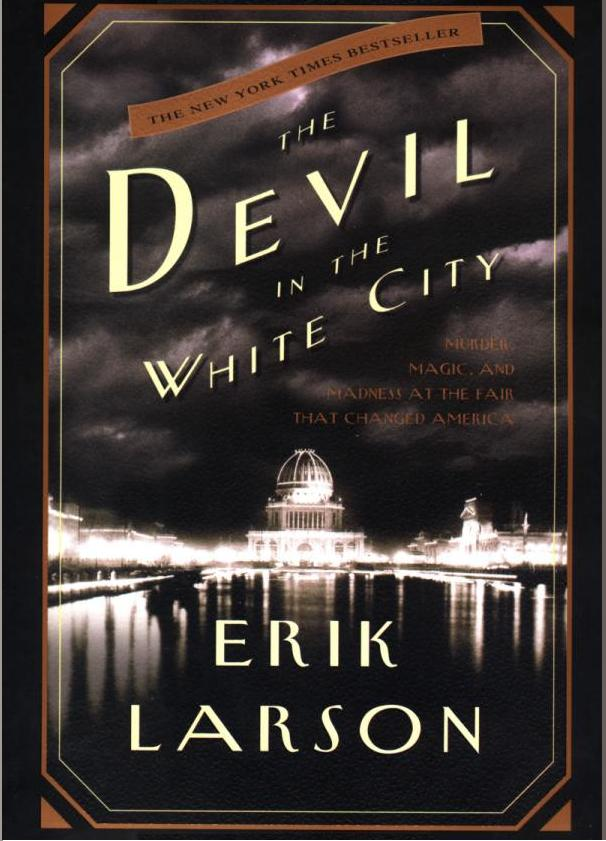“The Devil in the White City” by Erik Larson was a surprise bestseller of 2003. It made the 1893 World’s Columbian Exposition in Chicago into a fascinating tale, and --- who could have expected this? --- turned Daniel Burnham into a popular historical figure.
No question, it’s a page-turner, as Larson tells the dual stories of Burnham, the organizing genius behind the White City (as the fair was known), and H.H. Holmes, a serial killer who preyed on young women in a nearby neighborhood during the exposition.
It’s sold more than a million copies.
But it’s a bad book.
 For many in the planning community and fans of history, that’s heresy. They’ve told me that “Devil” has been a boon to public understanding and interest in the past. That those who have read the book have a better sense of why planning is important. And that the book’s fans are more likely to develop a longstanding interest in history.
For many in the planning community and fans of history, that’s heresy. They’ve told me that “Devil” has been a boon to public understanding and interest in the past. That those who have read the book have a better sense of why planning is important. And that the book’s fans are more likely to develop a longstanding interest in history.
That’s part of the problem. My guess is that, next to “Devil,” other, better history books are going to seem deadly dull. Larson uses fiction-writing techniques to make his story sing --- which is all well and good if he’s working with facts.
Often, in “Devil,” however, that’s not the case.
I’ve expounded at length about this in the past --- first, in a 2006 lecture at the Chicago History Museum that you can find here, and, second, in a 2007 commentary in the Chicago Tribune that’s available here.
If you’re interested in my detailed examination of the book, please take a look at one or both of those.
The essential problem
Here’s my essential problem with “Devil”: Key scenes in the book, as well as other descriptions, characterizations and details, aren’t based on historical sources, but are rooted in Larson’s speculations and suppositions.
Yet, he presents them as fact.
.jpg)
Indeed, the book is sold as a work of non-fiction, a work of history. In a note in the front of the book, Larson writes, “However strange or macabre some of the following incidents may seem, this is not a work of fiction. Anything between quotation marks comes from a letter, memoir, or other written document.”
The quotes may have historical sources, but, throughout his work, Larson includes descriptions of scenes and puts thoughts into the heads of Burnham, Holmes and others for which he has no document.
At times in his footnotes --- I’m one of the few people who actually read footnotes --- if you study them very closely, you’ll see Larson acknowledge that he has “recreated” scenes, particularly two murders by Holmes. And not just by adding a fact here or there.
In his account of the murder of Julia Conner, he writes, “Holmes offered Julia a cheerful ‘Merry Christmas’ and gave her a hug, then took her hand and led her to a room on the second floor that he had readied for the operation.” Such details are what make Larson’s story so engrossing. You can see Holmes and see Julia, and hear him say to her the foreboding “Merry Christmas.” But there’s no way Larson could know any of it.
And, many times, there’s no footnote at all.
What Burnham felt
Larson describes a Chicago meeting at which Burnham’s introductory remarks are interrupted by a demand of “Let’s get to work” from Richard M. Hunt, a prominent Eastern architect.
“Hunt’s interjection startled Burnham,” Larson writes. “It brought back in a rush the hurt of the great dual snub by the East, his rejection by Harvard and Yale; but the remark and the obvious support it garnered in the room also caused Burnham to shift focus to the work at hand.”
Well, maybe. Even probably. But it appears that, as he wrote, Larson had no way of knowing exactly what Burnham felt and thought at that moment. Certainly, he didn’t include any note to indicate how he could know.
What Larson does is what the writers of historical novels have long done. And, if he and his publisher had called “Devil” a novel, I would have found no fault.
But, by representing “Devil” as non-fiction, Larson has led his readers to expect a similar wealth of telling detail in other books about historical events.
Because of that, true historians --- those who stick to the facts --- are going to have a more difficult time convincing fans of “Devil” that what they have to say is worth reading.
For a print-friendly version of this post, go here.
Blog Categories
- art (14)
- civic engagement (17)
- culture (16)
- future (26)
- green legacy (15)
- history (26)
- pavilions (4)
- schools (8)
- transportation (7)
